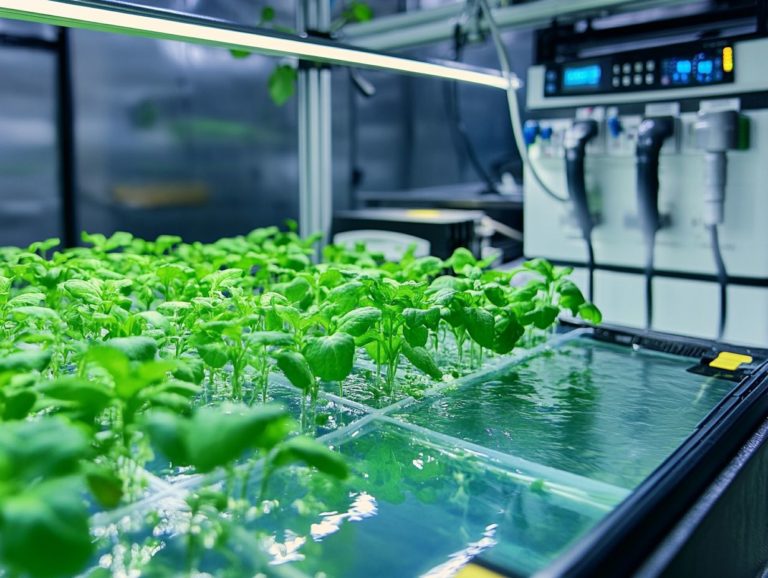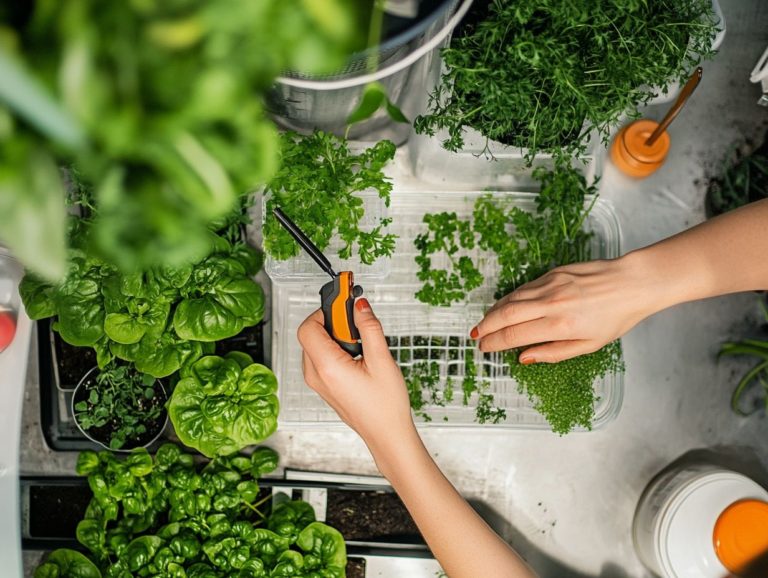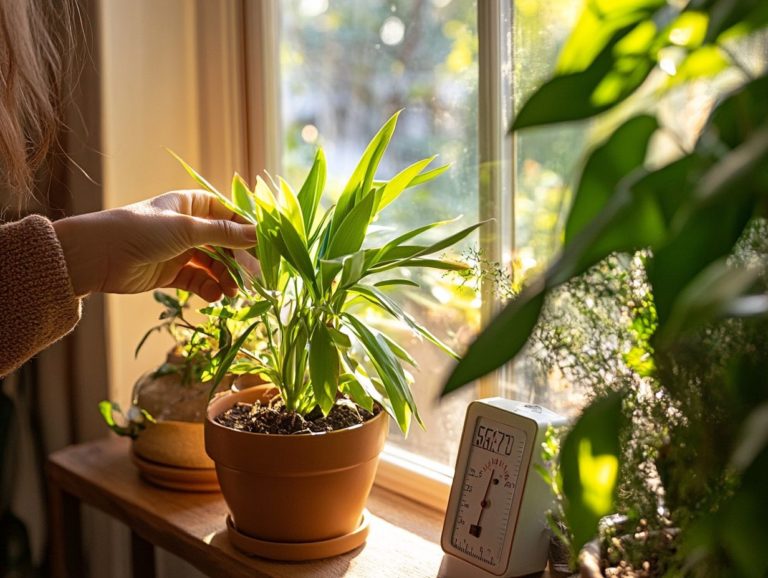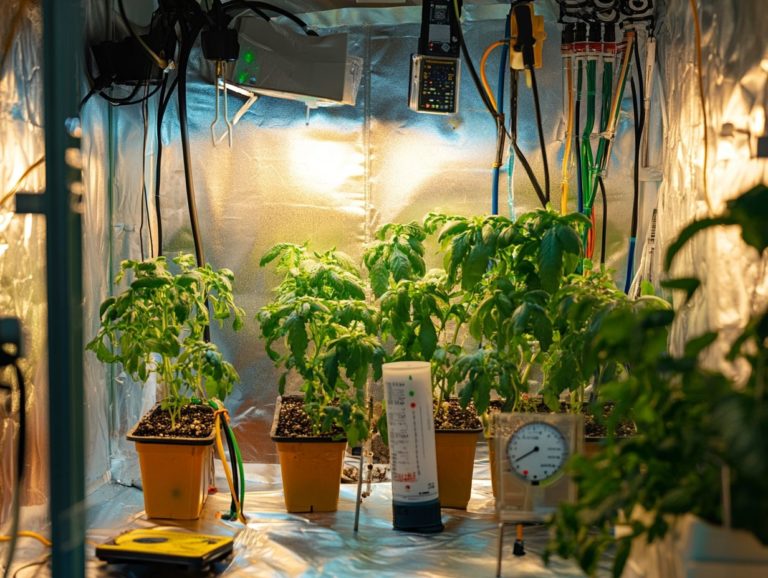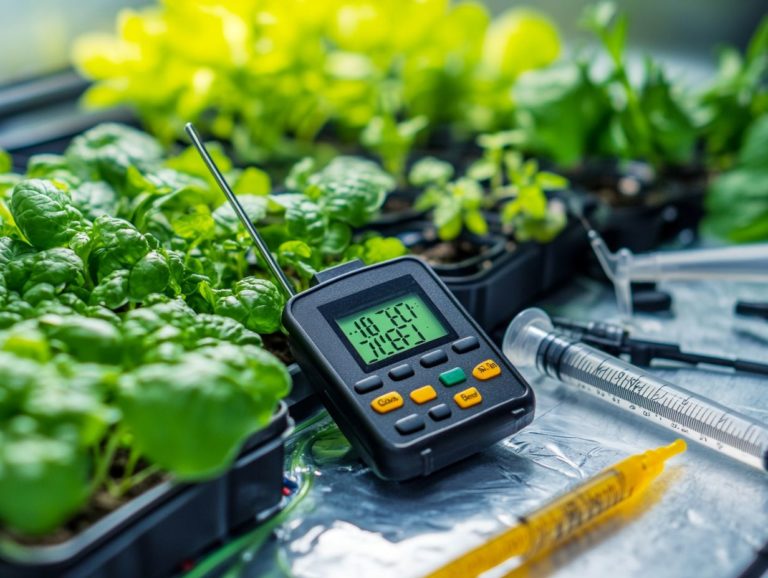Managing Root Rot in Hydroponic Plants
Root rot can be a stealthy adversary in hydroponic gardening, posing a significant threat to the health of your plants and the integrity of your entire system, especially in systems using Deep Water Culture. Don t wait until it s too late discover how to protect your plants now!
This guide will empower you to master root rot and keep your plants thriving. You ll learn how to identify and treat this prevalent issue, ensuring your plants not only survive but thrive.
Explore alternative methods and natural remedies that can assist you in managing root rot effectively. Uncover the secrets to maintaining a flourishing and resilient hydroponic garden!
Contents
- Key Takeaways:
- Understanding Root Rot in Hydroponic Plants
- Preventing Root Rot in Hydroponic Plants
- Identifying and Treating Root Rot
- Alternative Methods for Managing Root Rot
- Frequently Asked Questions
- What is root rot and why is it a problem in hydroponic plants?
- How can I prevent root rot in my hydroponic plants?
- What are some signs of root rot in hydroponic plants?
- How can I treat root rot in my hydroponic plants?
- Can I use natural methods to prevent or treat root rot in my hydroponic plants?
- Are there any types of hydroponic plants that are more susceptible to root rot?
Key Takeaways:
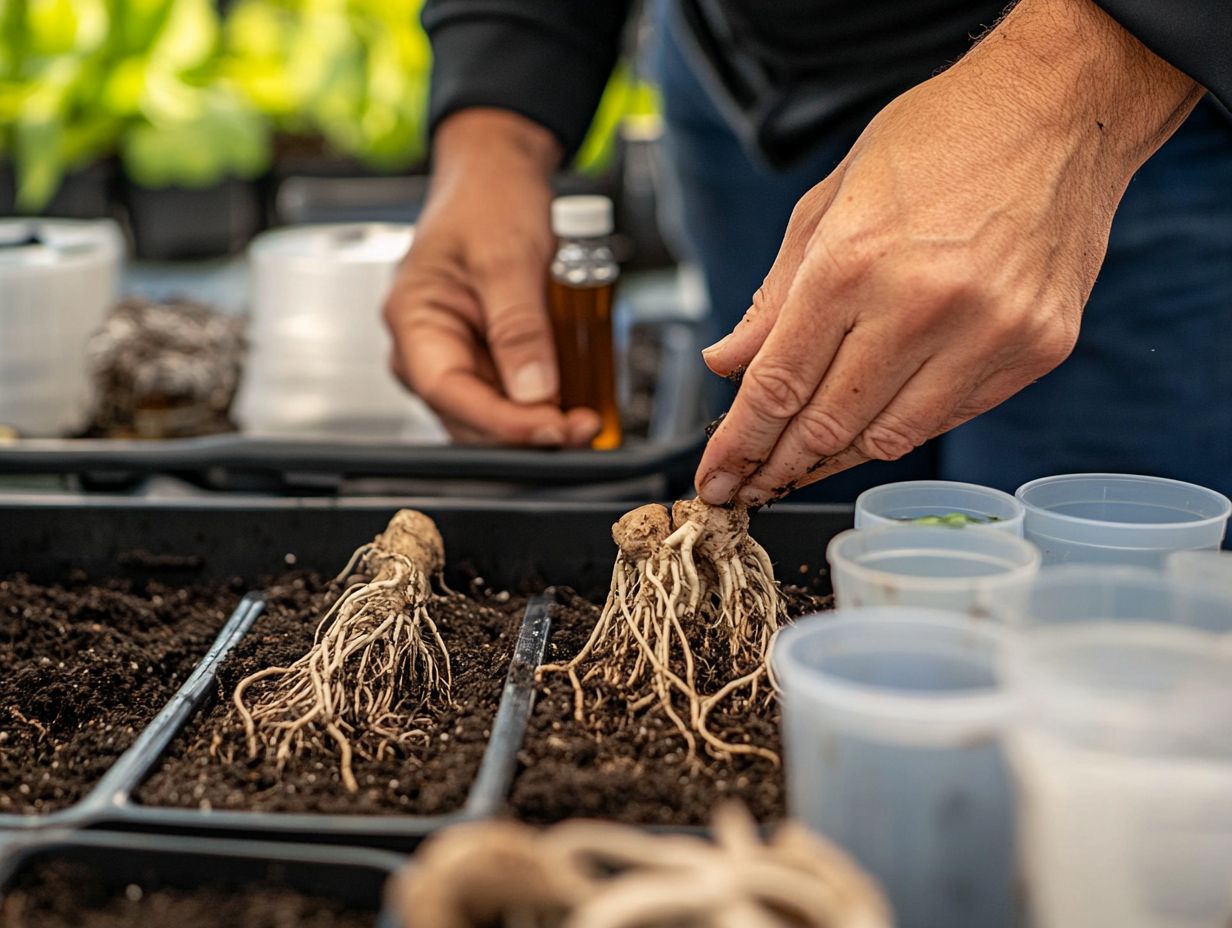
- Regularly monitor the pH and oxygen levels in your hydroponic system to prevent the growth of harmful bacteria and fungi that cause root rot.
- Proper sanitation and good plant hygiene practices, such as removing dead or decaying plant matter, can help prevent the spread of root rot in hydroponic plants.
- If root rot is already present in your hydroponic plants, consider using natural remedies like hydrogen peroxide or cinnamon to help control the growth of pathogens and promote root health.
Understanding Root Rot in Hydroponic Plants
Understanding root rot in hydroponic plants is essential for maintaining robust roots and ensuring optimal growth. Root rot is a multifaceted issue often caused by pathogens like Pythium fungus, which flourish in nutrient-rich water and low-oxygen conditions.
When your hydroponic system fails to deliver adequate oxygen levels, the roots become vulnerable to disease. Symptoms of root rot include discoloration, foul odors, and unsightly brown slime.
To tackle these challenges, consider integrating beneficial bacteria, or good bacteria that help plants grow healthier, into your nutrient solution. This can enhance root health and support a thriving hydroponic garden.
Causes and Symptoms
The causes of root rot in your hydroponic plants often arise from various pathogenic bacteria, particularly those anaerobic types that thrive in low-oxygen environments. When you start noticing symptoms like root discoloration, a slimy texture, or unpleasant odors, it s a telltale sign that the root crown and overall plant health are in jeopardy.
Several environmental factors can worsen the situation, including overwatering, poor drainage, and inconsistent nutrient levels. It s crucial to maintain optimal conditions to keep these harmful bacteria at bay.
Stay vigilant about moisture levels and ensure that your growing medium allows for adequate aeration. If you spot yellowing leaves or stunted growth, these could be warning signs that your plants are in distress, signaling potential root issues.
By being alert and responsive to these symptoms, you can take proactive measures to shield your hydroponic systems from the devastating effects of root rot.
Preventing Root Rot in Hydroponic Plants
Preventing root rot in your hydroponic plants is crucial for fostering robust growth and maximizing the efficiency of your hydroponic system. To effectively ward off this disease, focus on maintaining optimal oxygen levels by utilizing air stones and ensuring temperatures are kept within appropriate ranges.
Regularly clean your equipment and monitor reservoir conditions. These practices are essential for preventing root disease in hydroponics and greatly reduce the risk of root rot.
Best Practices for Prevention
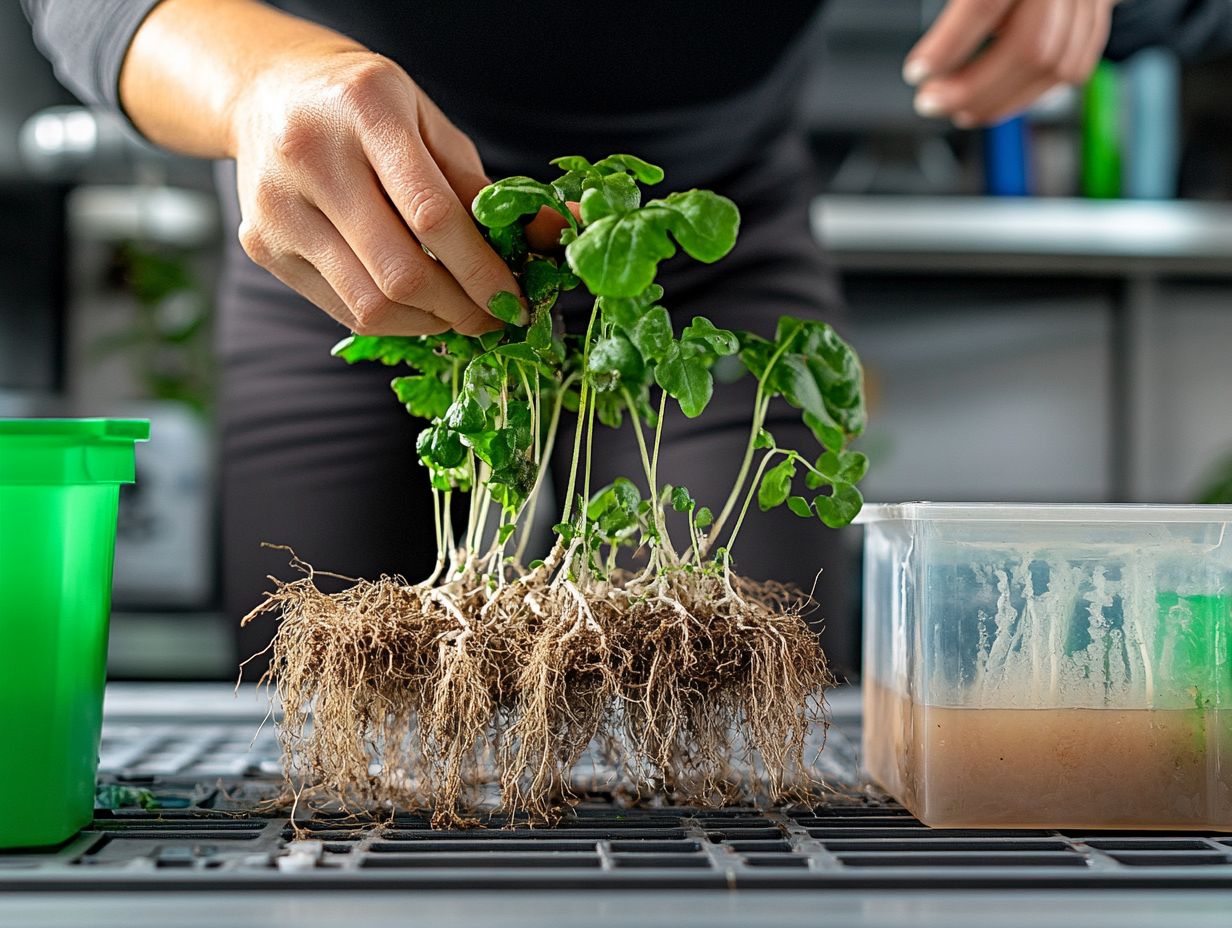
To prevent root rot in your hydroponics system, take a comprehensive approach. Incorporate beneficial bacteria into your nutrient solution and maintain strict temperature control.
Ensure that both the roots and equipment are meticulously cleaned. Products like Hydroguard and earthworm castings enhance microbial activity, promoting your hydroponic garden’s health.
Establishing regular cleaning routines is crucial to minimize the risk of root rot. Disinfect your tools and flush the system to eliminate organic buildup.
Maintain ideal environmental conditions, such as optimal light and humidity levels, to support strong plant health. Consider integrating beneficial nematodes or mycorrhizae, a type of fungus that helps plants absorb nutrients, into your setup for a balanced ecosystem.
Monitor water quality and adjust pH levels to prevent an environment that fosters root rot. This fosters a more resilient growing setup.
Identifying and Treating Root Rot
Identifying and treating root rot is essential for restoring your plants’ vitality in hydroponic systems. Look for symptoms like discoloration and mushy roots.
Once you identify the issue, act quickly to clean the roots and remove any harmful bacteria. Remedies like microbe tea can boost nutrient uptake and aid recovery.
Diagnosing and Addressing the Issue
Start diagnosing root rot by evaluating your plants and the hydroponic setup. Clean your equipment thoroughly to prevent harmful microorganisms from spreading.
Check the nutrient composition to ensure it supports healthy root growth. Effective environmental control can significantly enhance recovery chances.
Keep an eye on temperature, humidity, and light levels. Regularly inspect root systems for signs of problems, and test pH and moisture content to assess growing conditions.
Incorporating beneficial bacteria or fungi can help mitigate root rot. Ensuring proper drainage and airflow around the root zone creates an environment less friendly to pathogens.
Alternative Methods for Managing Root Rot
Explore alternative methods for managing root rot to enhance plant health without relying solely on chemical treatments. Natural remedies like molasses nourish beneficial bacteria, restoring balance in your hydroponic system.
Natural Remedies and Solutions
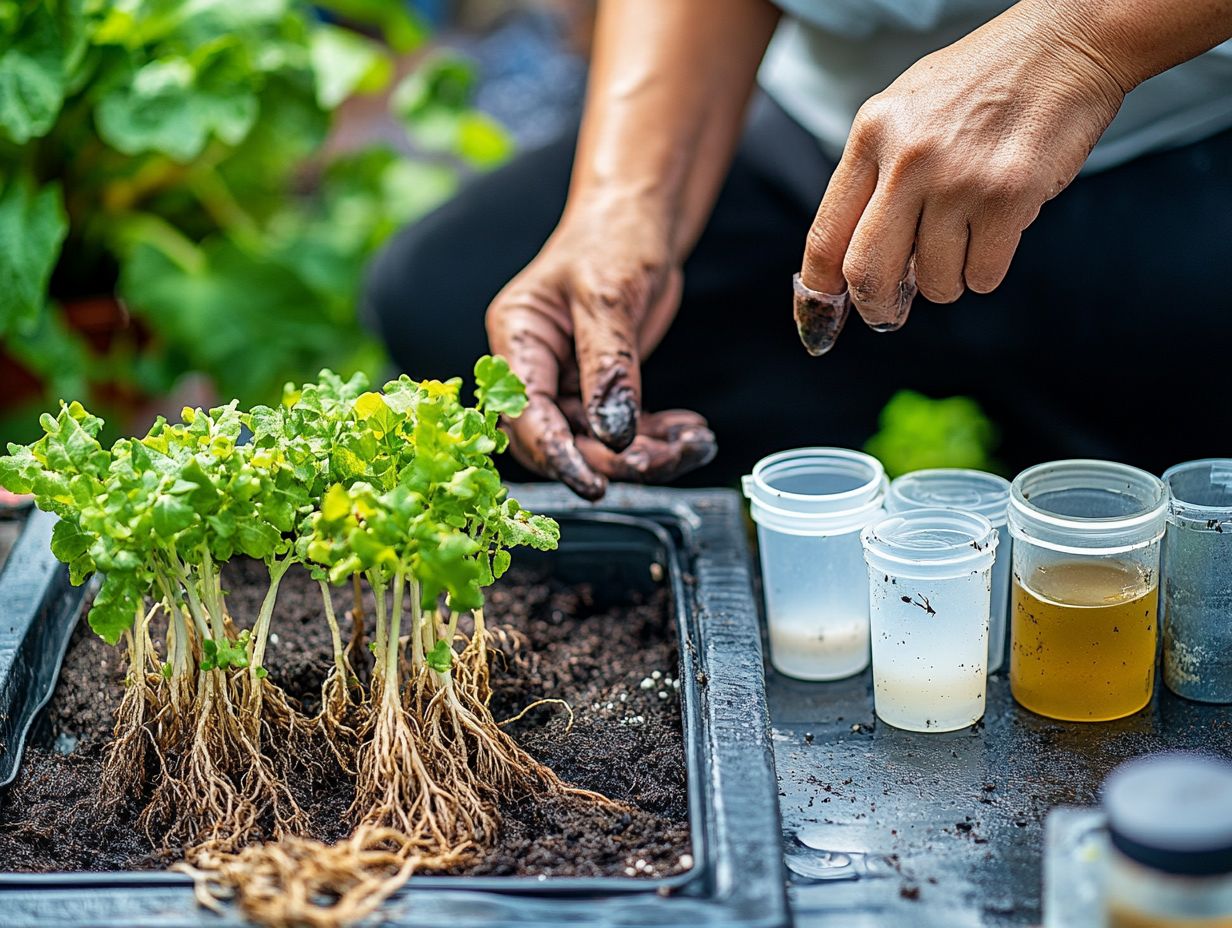
Natural remedies can help combat root rot in hydroponics. Focus on enhancing beneficial microorganisms and cleaning the roots.
Incorporating products like Hydroguard introduces beneficial bacteria and fungi. These help fight harmful organisms and create a thriving root zone.
Cleaning practices such as sterilizing grow trays and regularly replacing nutrient solutions reduce contamination risks.
Maintaining proper environmental control measures is also essential. Keep optimal temperature, humidity levels, and adequate airflow to support healthier roots.
Frequently Asked Questions
What is root rot and why is it a problem in hydroponic plants?
Root rot is a fungal infection that decays plant roots, leading to plant death. It thrives in hydroponic systems due to the moist environment.
How can I prevent root rot in my hydroponic plants?
Keep your hydroponic system clean! Regularly change water, disinfect equipment, and monitor pH levels.
What are some signs of root rot in hydroponic plants?
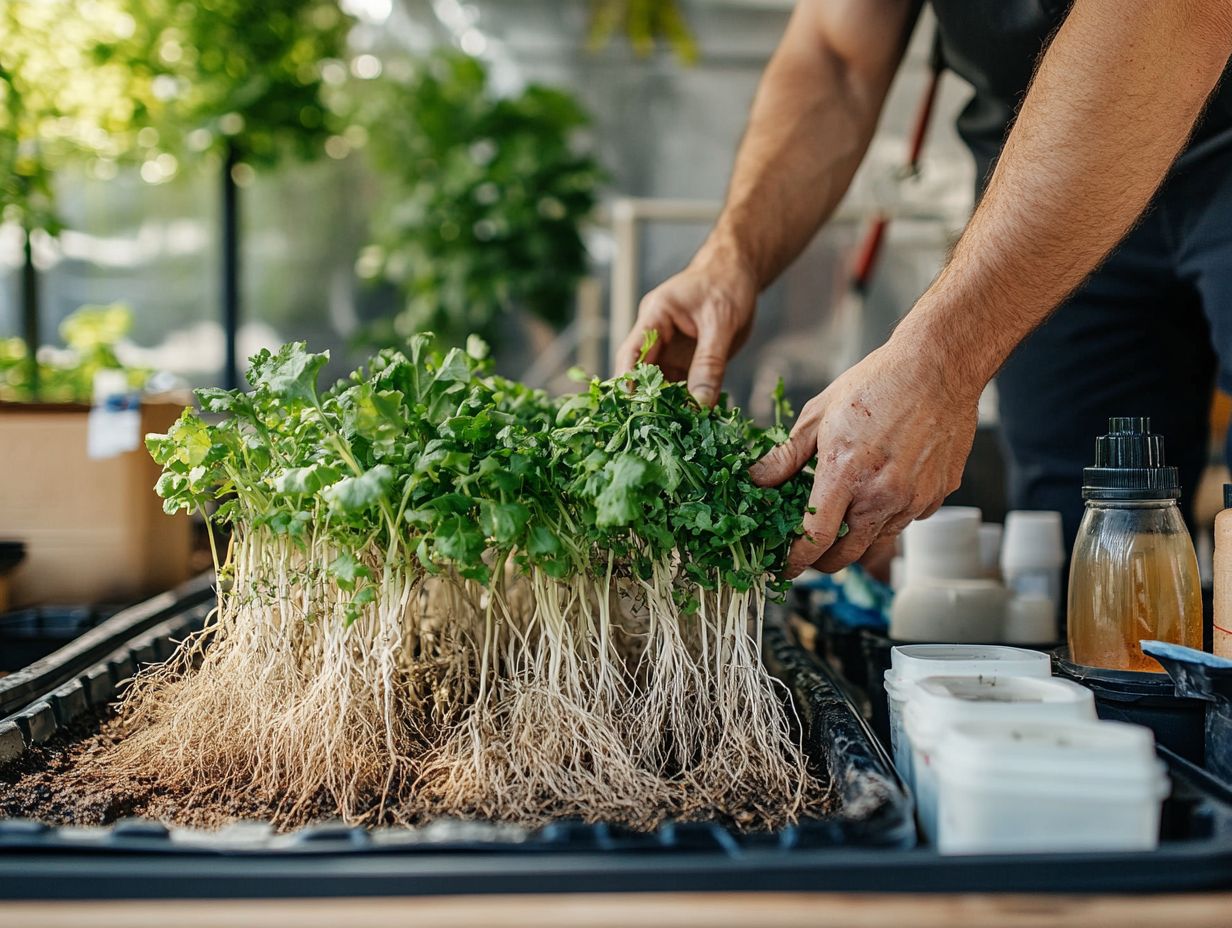
Signs include yellowing or wilting leaves, stunted growth, and a foul odor from the roots. Slimy, brown, or black roots are also indicators.
How can I treat root rot in my hydroponic plants?
Act fast if you spot root rot! Remove affected roots and dispose of them. Treat remaining roots with a fungicide or beneficial bacteria.
Can I use natural methods to prevent or treat root rot in my hydroponic plants?
Yes! Essential oils, beneficial bacteria, and natural fungicides like cinnamon or neem oil can help. Research these solutions before using them.
Are there any types of hydroponic plants that are more susceptible to root rot?
Yes, some plants are more prone to root rot, like tomatoes, cucumbers, and peppers. Monitor these closely and take extra precautions.

